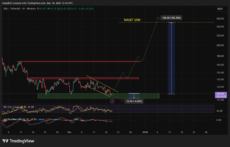The Journey of Hyperliquid (Part 2): Sprouting
Chainfeeds Guide:
Assets on HyperEVM are still a reissuance channel for HYPE, and it is still a long way from becoming an independent ecosystem.
Source:
Author:
Zuo Ye
Opinion:
Zuo Ye: Hyperliquid has allied with market makers to provide initial liquidity for HyperCore, but all of this is built on expectations for $HYPE—market makers exchange tokens for long-term profit sharing. The expansion method for HyperBFT nodes is through reallocation, meaning the foundation gradually transfers token shares to market maker nodes to bind their long-term commitment through shared interests. As a result, $HYPE becomes the core liability of Hyperliquid, needing to simultaneously satisfy the demands of market makers, HLP, and token holders. However, these three parties have conflicting interests: if the price of $HYPE stagnates for a long time, retail investors will sell, causing losses for market makers; if the price surges, it could trigger whale cash-outs and systemic risks. Therefore, the team chooses to keep $HYPE fluctuating around the $50 range, a price that retains appreciation potential while maintaining low downside pressure during bear markets. Hyperliquid’s strategy is not to sell liquidity directly, but to package it as a security asset in exchange for node trust and commitment. This security-centric sales logic serves as an important transition before the launch of HyperEVM and lays the foundation for the future token economic system. After Hyperliquid successfully replicated CEX liquidity with HyperCore, it began building an open public chain architecture, allowing $HYPE to become more than just an incentive token and gradually gain real consumption scenarios. However, according to App Capital data, capital flows on HyperEVM still mainly come from $HYPE reissuance and derivative assets, and the ecosystem has yet to form an independent endogenous cycle. LST, lending, and yield protocols are mostly centered around $HYPE, while neutral infrastructure like DEXs struggle to gain traction. Take Kinetiq as an example: it acts like an on-chain reissuer, developing LST, lending, and stablecoin businesses by wrapping $HYPE, and also participates in protocol revenue distribution as a HyperBFT node. In contrast, HyperEVM’s main DEX—HyperSwap—has a TVL of only about $44 million, far below the liquidity levels of mainstream public chains. This means HyperEVM is currently still a leverage amplifier for $HYPE rather than an independent ecosystem. For Hyperliquid to replicate Ethereum’s open growth, $HYPE must shift from buyback support to real consumption, forming a positive cycle through protocol usage and trading activity; otherwise, the relationship between the token and liquidity remains a one-way dependency. Hyperliquid’s HIP-3 proposal and CoreWriter System form a value bridge between HyperEVM and HyperCore. HIP-3 allows users to create their own contract markets on HyperCore, including prediction markets, forex, and options, with each project required to stake 500,000 $HYPE as collateral. On the surface, this is a decentralized auction mechanism, but in reality, the CoreWriter system establishes a cyclical leverage relationship between HyperEVM and HyperCore—$HYPE generated in the ecosystem flows back to HyperCore, resulting in de facto deflation. The crowdfunding model initiated by Kinetiq further strengthens this cycle: project teams raise funds to participate in auctions, and after deployment, must pay fees in $HYPE and share 50% of the profits with Hyperliquid; if violations occur, the staked $HYPE will be confiscated. In this way, trading activity on HyperEVM ultimately translates into value support for HyperCore. It can be said that Hyperliquid, through open access and mandatory staking mechanisms, achieves a closed-loop amplification of token value. HIP-3 not only redefines the economic model of $HYPE, but also marks Hyperliquid’s transition from a single matching system to a hybrid of public chain and exchange, laying the structural foundation for it to become the next Binance-like platform.
Disclaimer: The content of this article solely reflects the author's opinion and does not represent the platform in any capacity. This article is not intended to serve as a reference for making investment decisions.
You may also like
NEAR Supported on Solana: A Revolutionary Cross-Chain Leap for Users
Bitwise Sees Solana Hitting Records in 2026: Major Rally Incoming?

Intuit USDC Integration: A Revolutionary Step for Crypto Tax and Accounting
Altcoins Under Pressure After Sharp ETH/BTC Drop, Traders Watch Next 48 Hours
